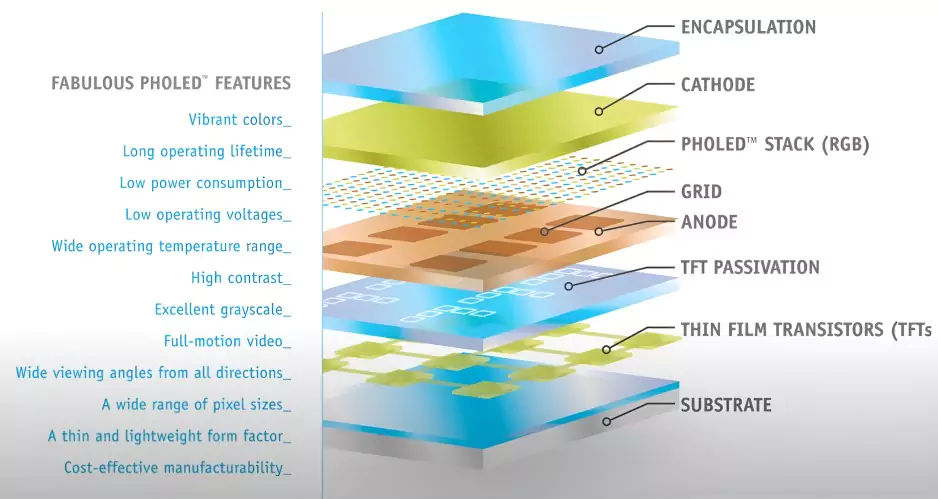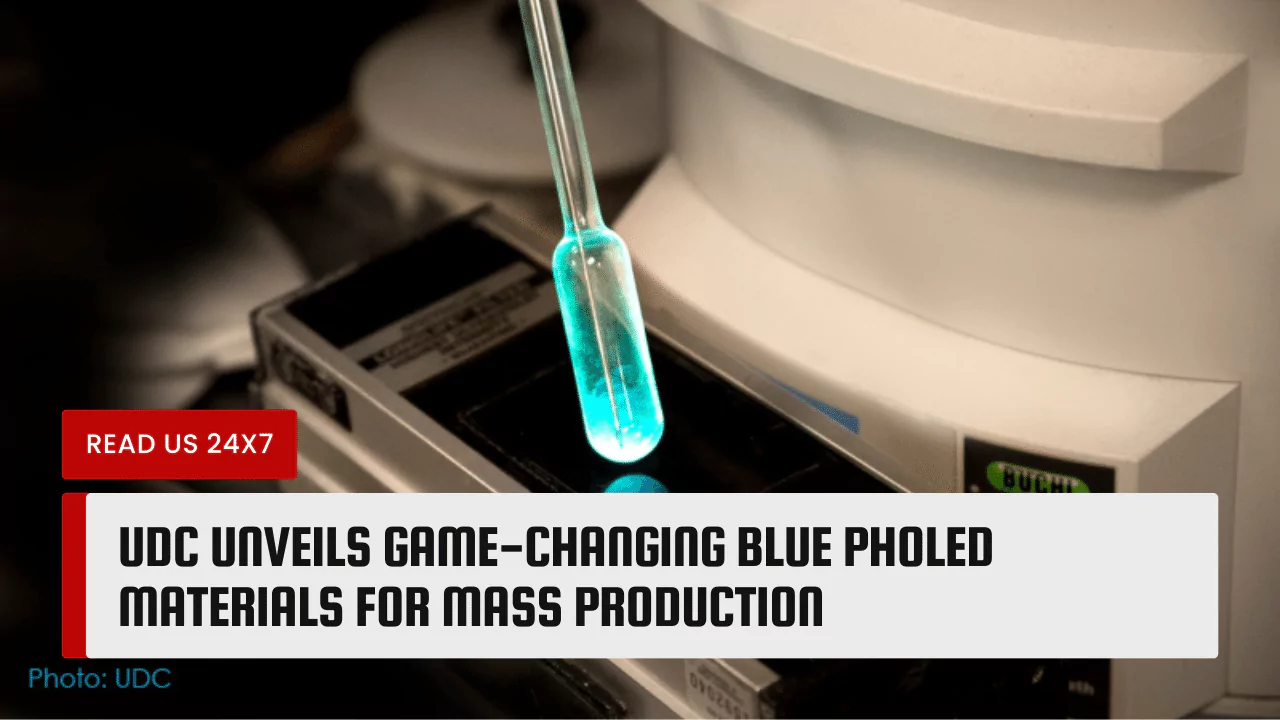Universal Display Corporation (UDC), a leading developer and manufacturer of organic light emitting diode (OLED) technologies and materials, announced the launch of its new blue phosphorescent OLED (PHOLED) materials for mass production in December 2023. These materials are expected to revolutionize the display industry by enabling longer-lasting, brighter, and cheaper OLED displays for various electronic devices, such as cellphones, TVs, laptops, and wearables.
Understanding OLED and PHOLED Technology

OLEDs are thin-film devices that emit light when an electric current is applied. They consist of organic layers sandwiched between two electrodes. OLEDs can produce high-quality images with wide viewing angles, high contrast, and low power consumption. They are also flexible, transparent, and lightweight, making them ideal for various applications.
However, not all OLEDs are created equal. There are two types of OLEDs: fluorescent and phosphorescent. Fluorescent OLEDs emit light by singlet excitons, which are electron-hole pairs that have the same spin. Phosphorescent OLEDs emit light by both singlet and triplet excitons, which have opposite spins. Triplet excitons are three times more abundant than singlet excitons, so phosphorescent OLEDs can achieve higher efficiency and lower power consumption than fluorescent OLEDs.
PHOLEDs are OLEDs that use phosphorescent materials to emit light. UDC is the pioneer and leader in developing and commercializing PHOLED technology. UDC’s PHOLED materials can emit red, green, and blue light, which are the primary colors for creating full-color displays. However, blue PHOLEDs have been the most challenging to develop, due to their shorter lifetime and lower stability compared to red and green PHOLEDs.
Impact of Blue PHOLEDs on Electronic Devices

Blue PHOLEDs are the key to unlocking the full potential of OLED displays, as they can significantly improve the performance and cost of OLED devices. Some of the benefits of blue PHOLEDs are:
- Longer Battery Life for Cellphones: Blue PHOLEDs can reduce the power consumption of OLED displays by up to 50%, extending the battery life of cell phones and other portable devices. This is especially important for 5G-enabled devices, which require more power for data transmission and processing.
- Cheaper and Brighter TVs: Blue PHOLEDs can lower the material and manufacturing costs of OLED displays, making them more affordable and competitive with LCD and QLED TVs. Blue PHOLEDs can also increase the brightness and color gamut of OLED TVs, enhancing the viewing experience and quality.
Who Will Utilize Blue PHOLEDs First?
UDC’s blue PHOLED materials are ready for mass production, and the company has already signed agreements with several major display manufacturers to supply them with its PHOLED materials. Some of the manufacturers that are expected to use blue PHOLEDs in their products are:
Samsung
Samsung Display is poised to be the first to incorporate blue PHOLEDs into mass-produced AMOLED, potentially featuring the technology in the Galaxy Z Fold and Flip 7 smartphones by 2025. While red and green PHOLEDs are presently stable for device use, the addition of blue is crucial to complete the RGB trio for OLED displays.
LG
LG is the world’s largest producer of OLED TVs, and it has been using UDC’s red and green PHOLED materials for its OLED TV panels. LG is also developing its own blue PHOLED materials, but it is unclear when they will be ready for mass production. LG may also use UDC’s blue PHOLED materials for its OLED TVs, as well as for its other OLED products, such as laptops, monitors, and wearables.
BOE
BOE is the world’s largest producer of LCD panels, and it has been expanding its OLED production capacity in recent years. BOE has been using UDC’s red and green PHOLED materials for its OLED panels, which are supplied to various smartphone brands, such as Huawei, Apple, and Xiaomi. BOE is also expected to use UDC’s blue PHOLED materials for its OLED panels, as well as for its flexible and foldable OLED products.
Future Outlook for PHOLED Displays
The launch of UDC’s blue PHOLED materials marks a major breakthrough for the OLED industry, as it opens up new possibilities and opportunities for OLED displays in various electronic devices. According to market research firm Display Supply Chain Consultants, the OLED display market is expected to grow from $36 billion in 2023 to $58 billion in 2026, with a compound annual growth rate of 16%. PHOLED displays are expected to account for more than 80% of the OLED display market by 2026, as they offer superior performance and cost advantages over fluorescent OLED displays.
The future of PHOLED displays is bright, as they can enable more innovative and diverse applications of OLED technology, such as transparent, flexible, foldable, and rollable displays. UDC is committed to advancing and improving its PHOLED technology and materials, as well as expanding its product portfolio and customer base. UDC’s vision is to make OLEDs the dominant display technology for the 21st century and beyond.



